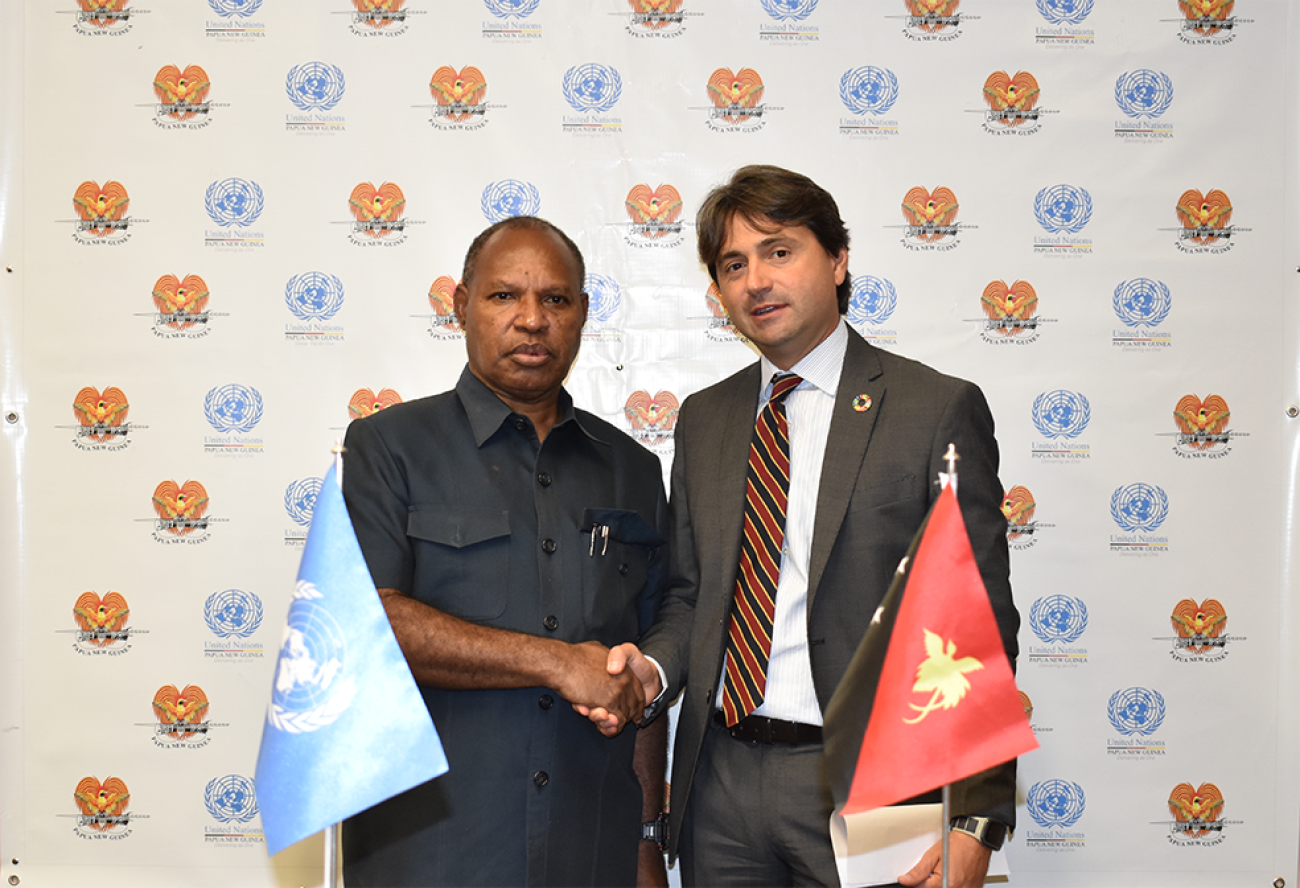The United Nations and the Government of PNG has successfully completed the Annual Joint Program Steering Committee Meeting. This Review was co-chaired by the Acting Secretary of the Department of National Planning Mr. Koney Samuel, MP, and the United Nations Resident Coordinator Mr. Gianluca Rampolla. Participants in the Review Meeting included representatives of other missions in-country, heads of agencies, churches, private sector and civil society organizations.
The United Nations, with senior Government officials and development partners, discussed the United Nations’ 2018 results and 2019 priorities under the United Nations Development Assistance Framework and the contribution towards the Sustainable Development Goals and the Medium-Term Development Plan III.
In 2018, the UN spent a total of USD 82.1 million in PNG, coming in third, after Australia and the Asian Development Bank, doubling its 2017 financial delivery.
Of that, nearly USD 41.4 million was allocated for joint programming, the bulk of which was for the responses to two nationally declared emergencies, the Highlands Earthquake and the polio outbreak.
“Whether through our development programmes or emergency interventions, the work of the United Nations has reached most of the citizens in Papua New Guinea in 2018,” Mr. Rampolla said. “From the working mother in Port Moresby looking for a safer space in the market stalls, or the earthquake- affected children in the highlands who lost their schools to the health workers delivering life-saving vaccines in some of the most remote areas of the country. The United Nations is here to reinforce resilience, help realize human potential and achieve long-term sustainable development.”
Mr. Rampolla went on to acknowledge the partnerships that enabled the delivery of UN programmes in 2018. He said, “we are grateful to the Government of PNG for its leadership, as well as to invaluable partners for their important contributions and support to our programmes: Australia, Canada, the European Union, GAVI the Vaccine Alliance, Global Polio Eradication Initiative, Japan, New Zealand, the United States, Education Can’t Wait, the United Nations Central Emergency Response Fund and the United Nations Peacebuilding Fund. I would also like to acknowledge the provision of critical logistical support by Exxon Mobil and Oil Search during the Earthquake response”
In response to the M7.5 earthquake, the United Nations mobilized over USD 20 million to meet the needs of the 500,000 people impacted, and specifically the 270,000 people, including 125,000 children, in immediate need of life-saving assistance.
The polio vaccination campaign has reached 97 per cent of children under 15; more than 3.5 million children were vaccinated through a multi-stakeholder partnership involving government, the United Nations and civil society organizations.
The United Nations has also been supporting the National Government and the Autonomous Bougainville Government in the implementation of the Bougainville Peace Agreement and its three pillars: autonomy, referendum and weapons disposal, especially during the period leading up to and after the referendum, which starts on 12 October 2019.
In 2019, as proposed under the annual work plan, the UN plans to spend USD 87.6 million in Papua New Guinea - an increase of USD 5.5 million from the previous year. By Sustainable Development Goal categories, the largest allocations are in the areas of health, climate action, gender equality, peace and justice.
Said Mr. Rampolla: “The United Nations adopts the key philosophy underpinning of Melanesian culture, that leaving no one behind is core to our work.”
For 2019, the UN is working across the country and all development areas with over 200 activities. This work can be summed up in seven signature areas – health, disaster risk management, development data, agriculture, peacebuilding, gender equality and environmental protection/climate change. All of which contribute to the eight key result areas of the Medium-Term Development Plan III.
Acting Secretary Koney Samuel said: “The government had localized and integrated the Sustainable Development Goals (SDGs) indicators into the MTDP III 2018 - 2022 log frames with their costings. The MTDP III 2018 – 2022 contain eight (8) Key Result Areas (KRA’s) where SDGs indicators are all captured. Prominence is given especially to the KRA 7: Responsible Sustainable Development and KRA 8: Sustainable Population and their log frames containing the costing involved in the next 5 years.”
The United Nations developed its plan in the context of a country which ranks 153 out of 189 countries in the 2018 Human Development Index. About 60 percent of the population is under 24 years old and national poverty estimates have stayed put at 37 percent over the past decade.
Mr. Rampolla said the UN will deliver coherent and high-quality support to achieve the Sustainable Development Goals by 2030 and to have Papua New Guinea have a Human Development Index ranked among the top 50 countries in the world by 2050.
The United Nations Development Assistance Framework 2018-2022 articulates the United Nations’ technical cooperation towards the achievement of Papua New Guinea’s national development priorities.



